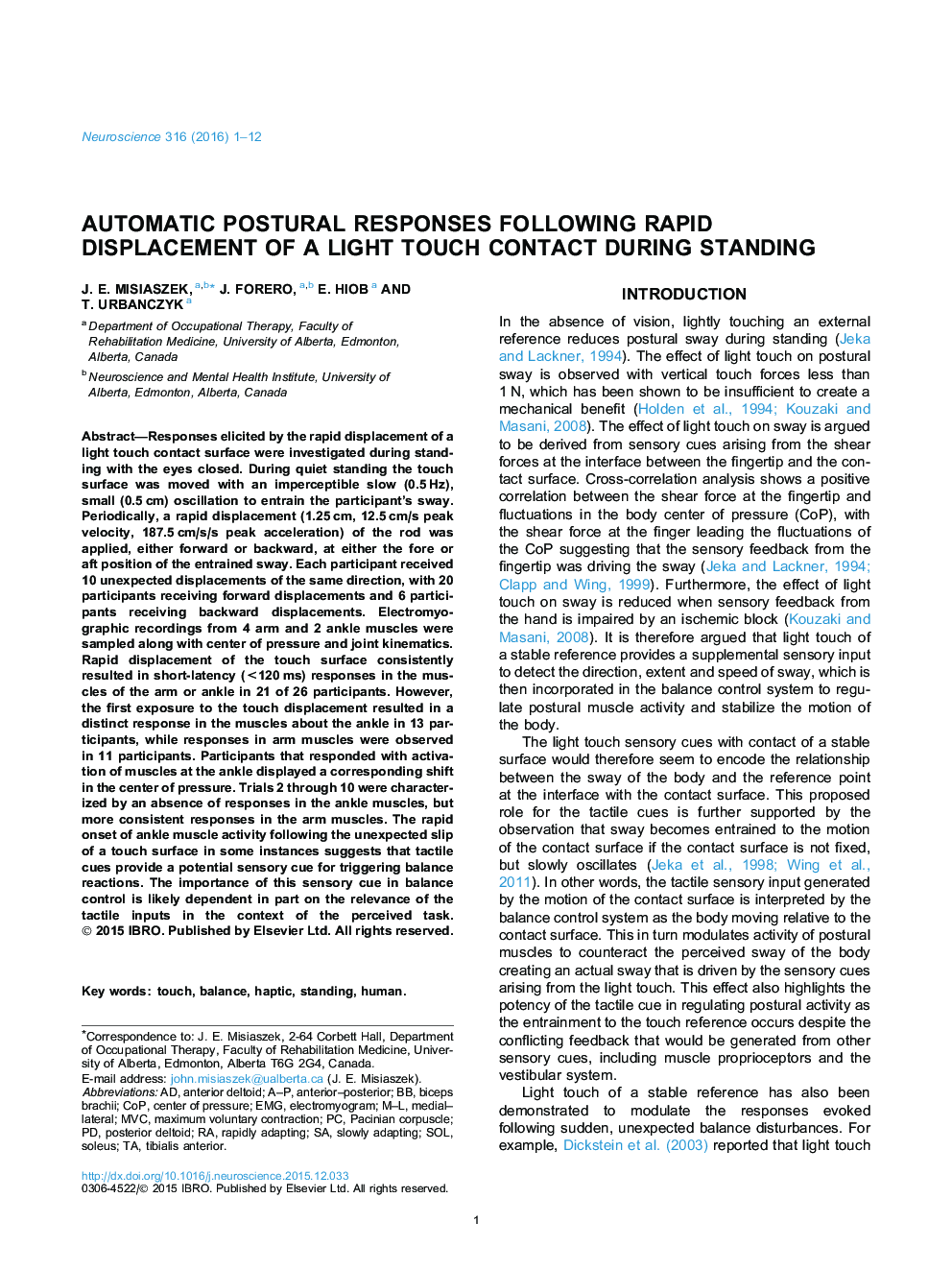| کد مقاله | کد نشریه | سال انتشار | مقاله انگلیسی | نسخه تمام متن |
|---|---|---|---|---|
| 6271418 | 1614760 | 2016 | 12 صفحه PDF | دانلود رایگان |
- Displacement of a light touch contact was capable of evoking rapid onset activity in ankle muscles.
- Ankle muscle responses were only observed with the first trial.
- Responses in arm muscles were commonly observed thereafter.
Responses elicited by the rapid displacement of a light touch contact surface were investigated during standing with the eyes closed. During quiet standing the touch surface was moved with an imperceptible slow (0.5Â Hz), small (0.5Â cm) oscillation to entrain the participant's sway. Periodically, a rapid displacement (1.25Â cm, 12.5Â cm/s peak velocity, 187.5Â cm/s/s peak acceleration) of the rod was applied, either forward or backward, at either the fore or aft position of the entrained sway. Each participant received 10 unexpected displacements of the same direction, with 20 participants receiving forward displacements and 6 participants receiving backward displacements. Electromyographic recordings from 4 arm and 2 ankle muscles were sampled along with center of pressure and joint kinematics. Rapid displacement of the touch surface consistently resulted in short-latency (<120Â ms) responses in the muscles of the arm or ankle in 21 of 26 participants. However, the first exposure to the touch displacement resulted in a distinct response in the muscles about the ankle in 13 participants, while responses in arm muscles were observed in 11 participants. Participants that responded with activation of muscles at the ankle displayed a corresponding shift in the center of pressure. Trials 2 through 10 were characterized by an absence of responses in the ankle muscles, but more consistent responses in the arm muscles. The rapid onset of ankle muscle activity following the unexpected slip of a touch surface in some instances suggests that tactile cues provide a potential sensory cue for triggering balance reactions. The importance of this sensory cue in balance control is likely dependent in part on the relevance of the tactile inputs in the context of the perceived task.
Journal: Neuroscience - Volume 316, 1 March 2016, Pages 1-12
